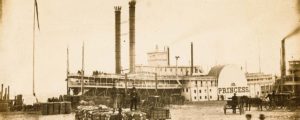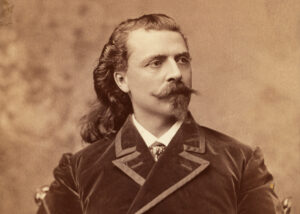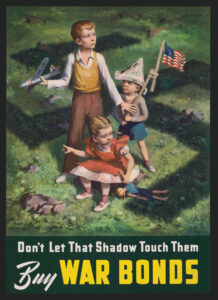Gettysburg: A Journey in Time
by William A. Frassanito
Caught between two mammoth boulders in Devil’s Den was the lifeless body of a lone Confederate. His musket leaned against a constructed stone wall, his empty cartridge box was lying open by his side, and his knapsack rested under his head. This scene is perhaps the most famous of all the Gettysburg photographs, a poignant image that in its cold, lonely rendering of death conveys the tragedy and horror of men killing each other. Despite the photograph’s title, “Sharpshooter,” the image is not intended to invoke feelings of bitterness or revenge against this calculating killer. This slain soldier, trapped in a natural rock mausoleum, represents the face of all the Gettysburg dead. One can only wonder about this man’s identity before the war stole his life. Was he married? What were his final thoughts as he fell? Who did he leave behind, and did they know about their loved-one’s fate? The “Sharpshooter” was the creation of photographer Timothy O’Sullivan, who carefully staged this and other Gettysburg photographs by moving dead bodies, arranging accoutrements and even posing living soldiers as corpses. Within the frame of the camera, O’Sullivan created a vision of war that helped satisfy a Northern public’s desire to see the killing fields of the Union and Confederate armies. For those living above the Mason-Dixon Line, the conflict was like a horrible nightmare that would intrude into their lives with sudden ferocity and then quietly disappear with almost no lasting effect. The images of the Gettysburg dead brought the real war to Northern households. The fear and terror that went through every soldier was virtually palatable in the images of mangled, bloated bodies awaiting an impersonal mass burial in the soil of Pennsylvania.
O’Sullivan and Alexander Gardner were two of the most prolific Civil War photographers, and like their professional peers, they saw themselves as artists who would create a battlefield landscape for the public’s imagination—and money—to consume. In Gettysburg: A Journey in Time, historian William A. Frassanito was the first scholar to identify the photographers of Gettysburg, chronicle their exploits on the battlefield, explore their artistic vision and explain the technical challenges of working in the field. The Gettysburg photographers, Frassanito argues, were preoccupied with death. More than 75 percent of Gardner’s pictures, for instance, focus on the human wreckage of war. Until the 1862 photographs of Antietam were released, the American public had never seen actual battlefield dead. The commercial appeal of such macabre images, in part, motivated the photographers when they arrived at Gettysburg. Fortunately for Gardner, who reached the southern portion of the field on July 5, the Union burial details had not finished their work in the area of Devil’s Den and Little Round Top. There he found rows of unburied Confederate dead near the Rose Farm and scattered corpses hidden between the rocks in the “Valley of Death.”
In a remarkable example of historical detective work, Frassanito discovered that dead bodies around Devil’s Den were moved, carefully positioned and essentially put on display. The Confederate sharpshooter in Devil’s Den was clearly staged for dramatic purposes. The body was moved 40 yards from where he originally fell. Frassanito was able to deduce this by going into the field himself and becoming intimately familiar with the terrain. By comparing the historic photographs to the modern landscape, he was able to locate, with a fair degree of precision, the exact camera position and angle. This comparison frames the format of the entire book in which Frassanito takes a wartime photograph and juxtaposes it with its modern counterpart. The physical changes in Gettysburg and its environs since the war are apparent and startling to anyone with a preservationist sensibility. Fortunately, Gettysburg Superintendent John Latschar has initiated an extensive restoration of the historic landscape that now enables visitors to go to places such as the Rose Farm and see the field just as it looked when O’Sullivan arrived with his camera.
It is easy to understand how the publishing maelstrom of Gettysburg books could disorient or even demoralize a new reader. It is easy to turn cynical and lose sight of the important books on the battle, especially with so many sensationalistic claims from historians who largely repackage well-established evidence under titillating titles. The originality of Frassanito’s approach, the rigorous care with which he performed his research and the book’s unromantic portrait of war make his book an essential read for anyone planning to visit Gettysburg for the first time or for the veteran traveler who makes the annual pilgrimage to Pennsylvania’s most sacred ground.
Originally published in the July 2007 issue of Civil War Times. To subscribe, click here.




